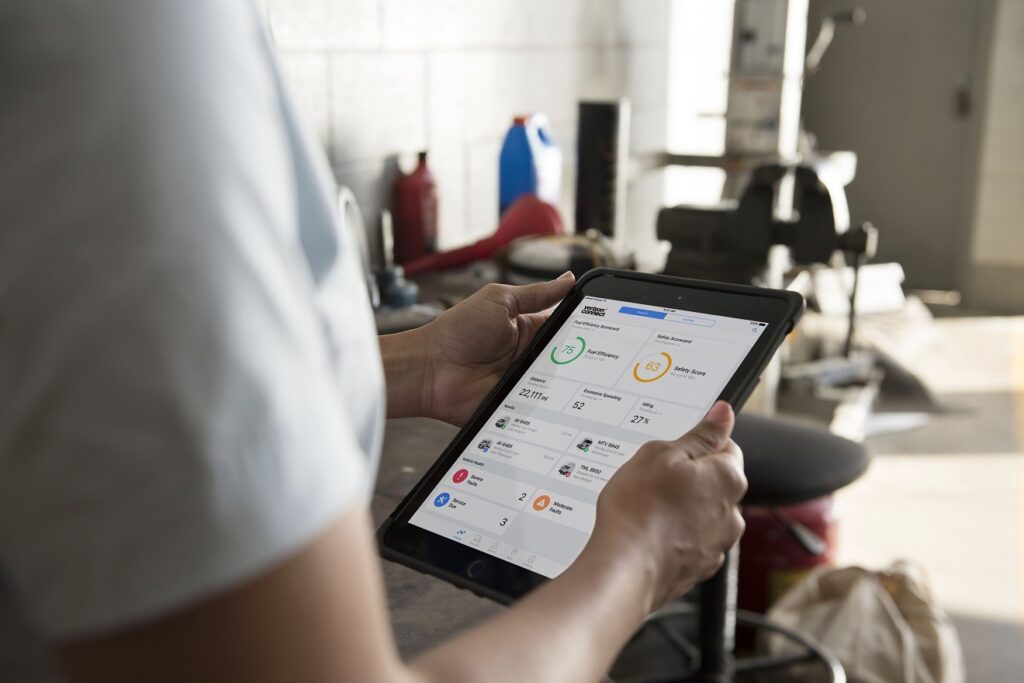
Though we don’t have a crystal ball to see the future, it is good to keep tabs on trends to see where the fleet management industry is heading. As technology continues to improve, some things that seem like science fiction could soon become mainstream and will be crucial for businesses looking to secure a competitive position in their respective markets. For fleet-based operations, where intelligent innovations are developing rapidly, investing in new technology is not just important, but imperative.
While many fleet-based businesses are already adopting the technology that will underpin their digital transformation journey, we have really only started to scratch the surface of the true future of fleets. Awareness of the technologies that have the potential to revolutionise fleet operations is key for any business’s ability to compete and grow in the future. Faster data processing, greater computing power, and more intelligent user interface design are just some of the ways fleets will evolve.
Computer processing through algorithms or machine learning, and data storage advances have opened up possibilities that seemed unimaginable even just a few years ago. For example, an autonomous vehicle collects and analyses more than a terabyte of data in real time, each day. This ability to collect, analyse and process reams of data has spawned on demand services that enable us to watch TV, stream music, order a taxi, or book a hotel room on our phones or online almost instantly – and it has increased expectations of what should be possible for both consumers and mobile workers.
With additional processing power, managers can look at multiple data sources to gain bigger samples or correlate different data sets to provide more detailed information. At the same time, greater processing creates new ways to make extra data easier for people to understand and even automate tasks. This will advance even further as the industry harnesses the ability to collect more contextually relevant data from a combination of devices such as vehicle, mobile devices and other internet enabled sensors.
Much has been made of potential of the autonomous vehicle. While their widespread adoption may be some time off, the computing power of non-autonomous vehicles is growing significantly. Vehicles are now capable of reporting more information to managers than ever before. From engine diagnostic details such as temperature, oil or fuel levels, and wear and tear on parts, to things inside the vehicle such as seatbelt use, number of passengers to even what was on the radio.
This enables more effective management of vehicles. Managers can foresee potential engine troubles, and schedule vehicle maintenance before they occur. Or they could gain other insights that could help employee safety or wellbeing and improve customer satisfaction. For example, if a vehicle’s engine is not switched on it’s a fairly safe bet, the driver may be delayed – which can be automatically communicated to customers or other workers. Or if the vehicle’s heater is constantly on, managers could provide better uniforms to help drivers stay warm, avoid getting sick and reduce fuel consumption.
Mobile workers could soon expect a frictionless experience, where they no longer need to manually input data or provide an update to a manager while performing a task, while managers will automatically gain valuable insights to improve decision making. For example, imagine you had a worker in the field who was installing a boiler for a customer. If the installation was taking longer than expected, contextual data collection and analysis would be able to determine this automatically and assign their next job to another field service worker or communicate an accurate expected arrival time to the next customer – all without intervention from the worker, or manager.
The rapid take-up of voice recognition technology shows how far the software has come. While it used to be rather unreliable, voice dictation is beginning to replace typing in online queries. Twenty percent of mobile queries were made via voice in 2016, while accuracy is now about 95 percent. Improved voice recognition is a powerful tool for the mobile worker, enabling hands free input of data, activation of tasks and communication with managers. It means that mobile workers can do their job more effectively, without having to take their eyes off the task at hand. This is especially useful in the fleet space – creating a better, safer field working experience.
Years ago, the concept of streaming films, TV or live sporting events in high definition over the internet didn’t seem possible. But through improved connectivity and video compression technology, we can create more visually led communications between mobile workers and the office. Visual sensors between the office and the mobile worker can enable more effective service – enabling remote diagnostic detection or instruction from a manager. For example, an engineer working on a site could use video to remotely consult with someone in the office to find an appropriate solution, rather than having to leave the site or send another worker out.
It’s easy to get carried away when talking about the future of technology. While some innovations are further off than others, it is still imperative for businesses to be aware of just how quickly things can change. Moreover, with its benefits in terms of speed and efficiency, fleet technology has the added advantage of supplying businesses with a tangible ROI and frees up fleet managers’ schedules to find new pockets of revenue. In today’s hyper-competitive world, the speed and agility afforded by new technology will be crucial for any business to adapt to this change.
Derek Bryan, Vice President, EMEA, Verizon Connect


